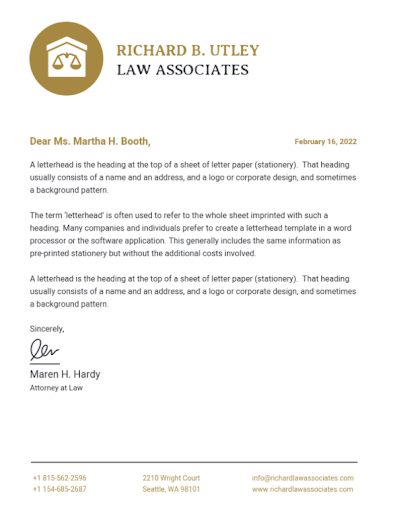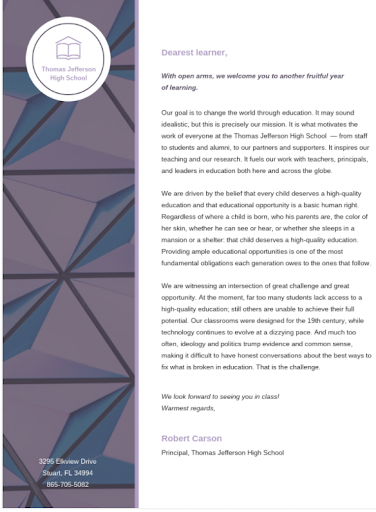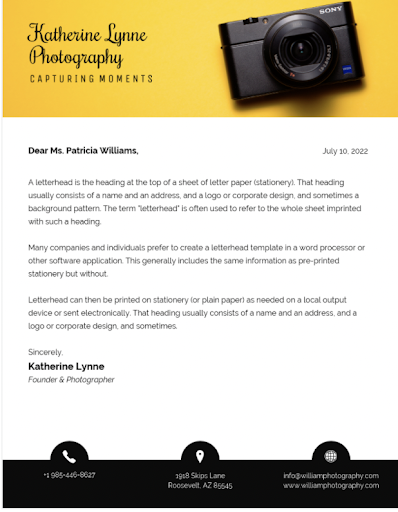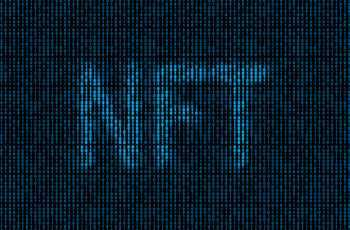In the crowded marketplace of today every business, large or small, must strive for a distinctive presence. One of the most effective ways to achieve this goal is through a strong letterhead design.
Once upon a time, letterhead was the formal record of an organization. Today it is a distinctive brand communicating special messages about your business to all your audiences – employees, associates, customers, and the community at large. In order for the letterhead design to be effective, however, certain rules must be followed:
- Make It Easy To Read Your Name And Title on Your Company Letterhead
Postal regulations require that letterheads printed in black ink on white paper meet minimum size requirements as specified by the U.S. Government Printing Office (GPO). When submitting artwork to a printer, make sure you follow organizational guidelines which may include sizing above or below those required by postal regulations. Remember not to go too small with type as this will make it difficult for people to read from a distance.
- Be Careful With Typeface And Size
Your letterhead design must communicate effectively, so be selective in your use of typefaces and sizes. Generally speaking, the more space you have available the more fonts and sizes you can use with equally effective results. If you have limited room to work with, however, one font size and a single font family will do nicely. In any case, make sure that heads and subheads are larger than body copy so they stand out from the rest of the text which simply supports it. The final decision is always subjective but remember that what works well for one organization may not work as well for another.
- Use A Logo For Your Custom Letterhead
If you still don’t have a logo, it’s about darn time you got one. A company logo can be the most valuable tool in creating and maintaining a strong identity for your organization. Its impact is immediate and long-lasting. It unifies all aspects of an organization’s communication from letterheads to business cards to signage, building exteriors, vehicles, brochures, and advertisements. When designing your logo always remember that it must look equally effective in black & white as well as color because postage rates are still calculated using the “black on white” rule.

- The Modern Letterhead Uses Only Two or Three Colors
Don’t use too many colors because it will become expensive for your printer to reproduce your letterhead in full color when only two or three are needed. A second or third color can be used for shading or to achieve a certain look and feel, just don’t try to use them as main colors.
- Use Paper That’s Easily Available And Economical
Your letterhead design must work effectively with your choice of paper stock as well as your printer’s printing process. So if you’re mailing to customers in another part of the country consider using paper readily available there since printers must purchase their raw materials locally and may not carry all types of paper from all parts of the country, much less the world. With respect to the economy, keep in mind that the higher the grade (or weight) of your paper, the more expensive it becomes so choose wisely and stay within your budget.
- Stick To The 3″ x 8″ Standard Size for Your Company letterhead Design
Although there are other standard sizes that may be technically acceptable, it is recommended that you stay with the 3″x8″ size which is easily adaptable to many desktop printers and mailing systems. If you have a specific reason for using an alternative size, get permission from your printer first since different size envelopes require different types of equipment to process them through the mail.
- Proofread Your Business Letterhead Carefully
Look for misspelled words and poor grammar. Use headings and subheadings to break up long stretches of text on letterheads Limit each line of copy to a maximum of 60 characters. Keep body copy short and make sure all information on letterheads looks good in black and white as well as color

- Keep Letterheads Simple And Easy To Read
It’s best to keep letterheads simple and easy to read, with a strong focal point for the reader’s eye. Be consistent in your use of typefaces and colors since this is what ties everything together. This can be achieved by using a common font family and size for all elements of the letterhead including the logo if there is one. Finally, make sure that all information is clear and legible from both 50 feet away as well as from an 8″ x 10″ photo you have lying around at home.
No experience when it comes to design? Head on to Venngage; the best letterhead maker in the market right now. Scroll their website and effortlessly make your design.
Conclusion
In many ways, great design can elevate your company above its competitors without necessarily being difficult or costly to achieve. In fact with just a little knowledge and practice the majority of letterhead design problems you encounter should be pretty easy to solve so always remember not to take yourself too seriously, have fun with it, and above all keep your printer involved at every step of the process.


